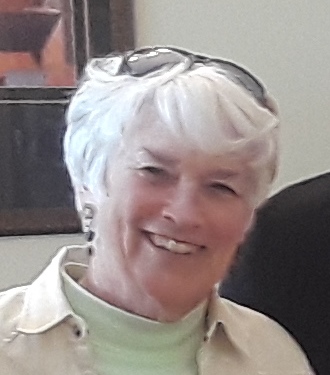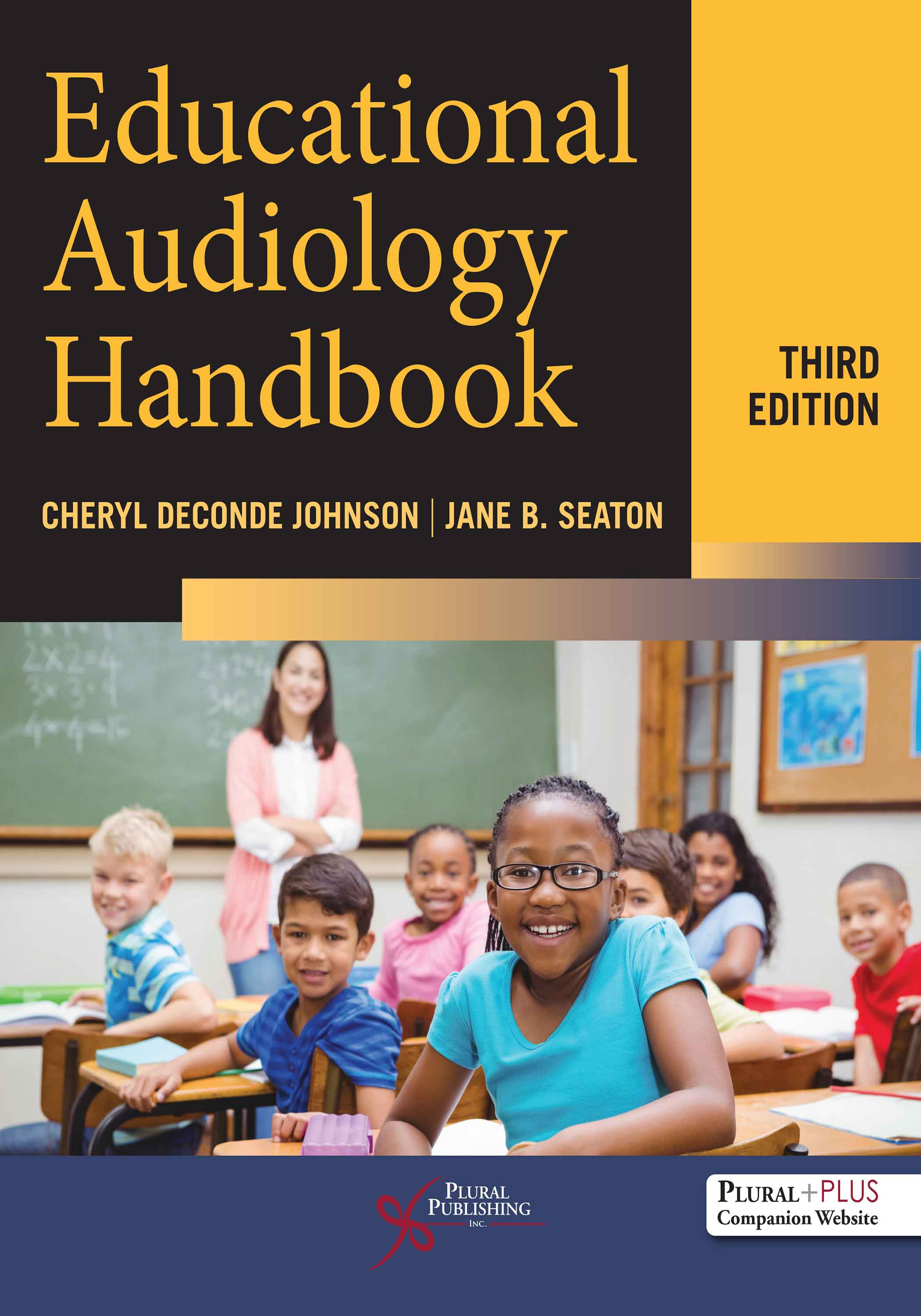
Educational Audiology Handbook.
Third Edition
Cheryl DeConde Johnson, Jane B. Seaton
Details: 606 pages, B&W, Softcover, 8.5" x 11'
ISBN13: 978-1-63550-108-7
© 2021 | Available
A New Edition is Available.
Educational Audiology Handbook, Third Edition, offers a roadmap for audiologists who work in schools or other providers who support school-based audiology services. As the gold standard text in the field, the handbook provides guidelines and blueprints for creating and maintaining high-quality educational audiology programs. Educational audiologists will also find guidance for achieving full integration into a school staff. Within this comprehensive and practical resource, there are a range of tools, including assessment guidelines, protocols and forms, useful information for students, families, school staff, and community partners, as well as legal and reference documents.
This edition has been streamlined with many of the handouts and customizable forms moved to the PluralPlus companion website for convenient downloading and printing.
New to the Third Edition
- All chapters revised to reflect current terminology and best practices
- A new feature called “Nuggets from the Field” which offers practical information from experienced educational audiologists currently working in school settings
- Revised and updated chapter on legislative and policy essentials
- Latest perspectives on auditory processing deficits
- Contemporary focus on student wellness and social competence
- Expanded information and resources for access to general education
- Updated perspectives on hearing loss prevention
- New information on the development of remote audiology practices
- Materials and recommendations to support interprofessional collaboration
- Updated and more comprehensive technology information with multiple handouts and worksheets
- Resources for students in all current learning environments
- Expanded focus on coaching to support students and school staff
- A PluralPlus companion website with instructor resources including PowerPoint lecture slides, a sample syllabus, learning objectives, and discussion questions, as well as student and professional access to the many handouts and customizable forms
List of Appendices
Preface
Contributors
Section I. Educational Audiology Practices
Chapter 1. Legislative and Policy Essentials
Legislation and Policies
Key Legislation
Initiatives and Events
Inclusion
The Deaf Child Bill of Rights
Early Hearing Detection and Intervention (EHDI)
The National Association of State Directors of Special Education (NASDSE).
The Council for Exceptional Children, Division for Communication, Language, and Deaf/Hard of Hearing
Legislative Initiatives
Summary
Suggested Readings and Resources
Appendices
Chapter 2. Roles and Responsibilities of the Educational Audiologist
Roles of Educational Audiologists
Educational Audiologists as Service Coordinators
Educational Audiologists as Instructional Team Members
Educational Audiologists as Consultants
Educational Audiologists in Schools for the Deaf
Responsibilities of Educational Audiologists
Identification
Assessment
Habilitation
Hearing Loss Prevention
Counseling and Coaching
Amplification, Cochlear Implants, and Other Assistive Technology
Ethical Considerations
Educational Audiology Service Delivery Models
School-Based Audiology Services
Contracted Audiology Services
Combined School-Based and Contractual Agreement
Telepractice
Establishing and Expanding Educational Audiology Services in the Schools
Reimbursement for Educational Audiology Services
Dispensing Personal Hearing Instruments
Cerumen Management
Support for Early Hearing Detection and Intervention (EHDI)
Training for Educational Audiologists
Summary
Suggested Readings and Resources
Appendices
Chapter 3. Partnering with Families
with Janet DesGeorges
Positive Attitudes
Rapport
Respect
Trust
Effective Communication
Informational Guidance
Quantity or information
Types of Information
Parent-to-Parent Communication
Parent Involvement
Committee/Task Force Work
Classroom Support
Parent Activities
Difficult Situations
Parent/School Disagreement Over Individualized Education Program Services
Influence of a Private Provider on School Services
Families That Have Difficulty Being Involved
Differing Opinions on Communication Modality
Summary
Suggested Readings and Resources
Appendices
Chapter 4. Hearing Screening and Identification
State Hearing Screening Mandates
Screening Requirements in Private Schools, Charter Schools and Other Nontraditional Education Settings
Purposes of Hearing Screening and Identification Programs
Professional Guidelines
Age Considerations
Prevalence Considerations
Resources for Hearing Screening and Identification Programs
Personnel and Time
Scheduling Considerations
Screening and Identification Program Considerations
Early Childhood
School-Age Children and Youth
Screening and Identification Procedures
Visual Inspection
Auditory Brainstem Response
Otoacoustic Emissions
Pure-Tone Audiometry
Tympanometry
Behavioral Observation
Screening and Identification Protocols
Infants and Young Children
School-Age Children and Youth
Hearing Screening and Monitoring Children Who Cannot Respond to Traditional Techniques
Screening Personnel
Audiologists
Speech-Language Pathologists
Parent Volunteers, School Nurses, and Paraprofessionals
Training of Support Personnel
Screening Equipment and Maintenance
Screening Equipment
Equipment Maintenance/Calibration
Infection Control
Screening Environment
Location of the Screening Room
Noise Levels
Other Factors
Organization of Screening and Identification Programs
Scheduling of the Screening
Activities Prior to the Screening
Activities During the Screening
Follow-Up Procedures
Follow-up Screening for Middle Ear Conditions and Medical Referrals for Audiologic
Referrals for Audiological Evaluations
Educational Screening
Data Management and Reporting
Determining the Effectiveness of Hearing Screening and Identification Programs
Data from Screening Program
Sensitivity and Specificity
Cost Effectiveness
Summary
Suggested Readings and Resources
Appendices
Chapter 5. Assessment
The Cross-Check Principle in Educational Audiology
Basic Assessment of Hearing
Case History
Otoscopy and Visual Inspection
Behavioral Assessment
Physiological Assessment
Modifications for Special Populations
Pure-Tone Modifications
Speech Modifications
Monitoring Hearing Sensitivity
Types of Monitoring
Schedules for Monitoring
Additional Audiometric Information and Functional Hearing Assessment
Speech Recognition for Sentences and Phrases
Speech Perception in Noise Testing
Listening in Noise
Speech Recognition With Visual Access
The Functional Listening Evaluation
Auditory and Listening Development Skills
Audiometric Assessment Considerations Without a Sound Booth
Cultural Considerations
Assessment of the Educational Effects of Hearing Status
The Classroom Listening Assessment
Use of Teacher Checklists
Interpretation of Audiological Information
Need for Comprehensive Evaluation
Communication of Assessment Results
Audiograms
Written Reports
Teacher Letters
Letters to Physicians or Other Professionals
Telephone or Personal Conferences
E-mail, Texting, and Web-Based Communication
Documentation
Privacy Issues
Personal Vulnerability and Safety
Summary
Suggested Readings and Resources
Appendices
Chapter 6. Auditory Processing Deficits
with Lisa Cannon
Auditory Processing Deficit Basics
Terminology and Definitions of Auditory Processing and Auditory Processing Deficits and Disorders
Criteria for Determination of an Auditory Processing Disorder
Practice Guidelines: The Role of the Audiologist and Other Professionals
APD and other Disorders
An Educational Model of Auditory Processing
ADP and Multitiered Systems of Support
Implementing a School-Based APD Program
Step 1. Developing the APD Team & Philosophy
Step 2. Referral & Screening
Step 3. Assessment for APD
Step 4. Eligibility for Services
Step 5. Intervention
Summary
Suggested Readings and Resources
Appendices
Chapter 7. Classroom Acoustics and Other Learning Environment Considerations
Learning Environments and At-Risk Students
Listening and Learning Challenges
Lighting and Learning Challenges
At-Risk Students
Universal Design for Learning
Properties of Classroom Acoustics
Noise
Signal-to-Noise Ratio
Reverberation
Inverse Square Law and Critical Distance
Classroom Acoustics and Speech Perception
Effects of Noise on Speech Perception
Effects of Reverberation on Speech Perception
Combined Effects of Noise and Reverberation on Speech Perception
Effects of Classroom Acoustics on Teachers
Classroom Acoustics Standard
History and Development of the Standard
Current Standard Status
Classroom Audio Distribution Systems
Conformance and Tolerance Verification
Standard Adoption
Classroom Acoustics Resolutions and Guidelines
Measuring Classroom Acoustics
Classroom Observation
Instrument and Software Programs
Classroom Noise Measurements
Classroom Reverberation Measurements
Estimating Critical Distance
Role of the Educational Audiologist
Management of the Learning Environment
Summary
Suggested Reading and Resources
Appendices
Chapter 8. Hearing Instruments and Remote Microphone Technology
with Erin Schafer
Rationale for Hearing Instruments and Remote Microphone Technology
Recent Trends and Regulatory Considerations
Regulations
The Role of Case Law
Professional Practice Standards and Scope of Practice Considerations
The Responsibility of Public Education
Keeping up with Technological Advancements
Equipment and Space Requirements
Assessment of the Hearing Instruments and Remote Microphone Technology in Children and Youth
Candidacy and Candidacy Considerations
Device Selection Considerations for Remote Microphone Technology
Personal Hearing Instruments and Remote Microphone Technology Options
Hearing Aids
Cochlear Implants
Remote Microphone Technology
Implementation and Management of Hearing Technology
Fitting and Verification
Orientation and Training
Validation
Monitoring and Equipment Management
Strategies to Implement the American Academy of Audiology Hearing Assistance Technology Guidelines
Other Assistive Technologies
Summary
Suggested Readings and Resources
Appendices
Chapter 9. Case Management and Habilitation
Planning Case Management and Habilitation
The Importance of Service Coordination
Facilitating Effective Case Management
Implementing Audiological Habilitation
Direct Services
Indirect Services
Services for Special Populations
Students with Unilateral Hearing Conditions, Single-Sided Deafness, or Minimal Hearing Loss
Students with Auditory Processing Deficits and Auditory Neuropathy Spectrum Disorder
Students with Multiple Learning Challenges
Students Using Cochlear Implants (CIs)
Early Hearing Detection and Intervention (EHDI)
Inclusion
Summary
Suggested Readings and Resources
Appendices
Chapter 10. Supporting Wellness and Social-Emotional Competence
with Carrie Spangler
A Wellness Perspective
Social-Emotional Development
Bullying and Victimization
Skills and Strategies for Students to Address Wellness and Social Competence
Self-Determination Skills
Self-Advocacy Skills
Counseling Strategies
Reflective Listening
Self-Assessment
Extending Conversations and Coaching
Networking for Students
Peer Mentors and Role Models
Referring for Additional Services
Summary
Suggested Reading and Resources
Appendices
Chapter 11. Developing Individual Plans
The Special Education Process
Step 1: Identification: Concern About the Child
Step 2: Referral to Special Education and Assessment
Step 3: Determination of Eligibility
Step 4: The Individualized Education Program Meeting
Step 5: Review and Revision of the Individualized Education Program
Due Process Procedures
The Educational Audiologist’s Role in the Special Education Process
The Individual Education Program
Consideration of Special Factors: Communication Considerations
Services, Placement and Least Restrictive Environment Considerations
Services for Parents
Transition Planning
Individualized Educaiton Program Goal Development
Section 504 Plan
The Services Plan
The Individual Family Service Plan
Eligibility Criteria
Purpose of the Individual Family Service Plan
Individual Family Service Plan Requirements
The Role of Case Law
Summary
Suggested Readings and Resources
Appendices
Chapter 12. Prevention of Noise Induced Hearing Loss and Tinnitus in Youth
with Deanna K. Meinke
Epidemiology Estimates of Noise-Induced Hearing Loss in Youth
Epidemiology of Noise-Induced Tinnitus in Youth
Rationale for Hearing Loss Prevention Targeting Youth
Public Health Role for Audiologists
Raising Public Awareness in the School Setting
Noise Awareness and Prevention Programs
Education to Prevent Noise-Induced Hearing Loss
Dangerous Decibels
Hearing Screenings for At-Risk Individuals
Advocating for Public Policies
Challenges and Future Directions
Section II. Collaborative Practices & Program Effectiveness
Chapter 13. Supporting the Educational Team
with Carrie Spangler
Formal Inservice
Preparation
Presentation
Follow-up
Continuing Contact With Participants
Coaching and Mentoring
Educational Coaching
Coaching for Educational Audiology
Mentoring
Summary
Suggested Readings and Resources
Appendices
Chapter 14. Educational Considerations for Students Who Are Deaf or Hard of Hearing
Critical Issues in Deaf Education
Accountability and Oversight
Communication and Communication Access
Quality Instruction
Evidenced-Based Practices
Students Not Eligible for Special Education
Maintaining Teacher of the Deaf and Related Service Provider Positions
Parent and Family Engagement
Early Hearing Detection and Intervention and Early Childhood Education
Technology
Deaf Versus Hard of Hearing
National Association of State Directors of Special Education: Ten Essential Principles for Effective Education of Deaf and Hard of Hearing Students
What Is Research Saying?
Legislative Initiatives in Deaf Education
Language Acquisition and Literacy Accountability
Deaf Child’s Bill of Rights
Hearing Aid Insurance
Educational Assessment
Transition Planning
Best Practice Considerations in Educating Children and Youth Who Are Deaf and Hard of Hearing
Know Your Students
Adopt Program Standards
Conduct a Program Review
Identify Evidenced-Based and Consensus-Based Practices
Utilize Progress Monitoring
Incorporate Expanded Core Curricula
Utilize Deaf and Hard of Hearing Peers and Role Models
Engage Parents and Caregivers
Summary
Suggested Readings and Resources
Appendices
Chapter 15. Collaborative School–Community Partnerships
Establishing and Maintaining Relations With Community Resources
Identifying and Interfacing ith Community Resources
Identifying Resources Through a Community Survey
Potential Community Partners
Updating the Community Resource Survey
Marketing and Advocacy for Educational Audiology Programs
Increased Name Recognition
Broadened Visibility of Service
Increased Knowledge of Program Outcomes
Internal Marketing
External Marketing
Developing and Fostering Creative Collaborative Efforts
Information and Materials to Share
Facilitating Interprofessional Collaboration
Fostering Creative Community Collaboration
Legal and Ethical Issues
Summary
Suggested Readings and Resources
Appendices
Chapter 16. Program Development, Evaluation, and Management
Program Development
Laying the Foundation
Needs Assessment
Planning
Program Evaluation
Assessment of Existing Audiology Services
Planning for Improvement
Implementation of New Services
Measuring Effectiveness
State Model Evaluation Systems
Program Management
Annual and Monthly Scheduling
Day-to-Day Scheduling
Office Support
Data Management
Forms
Budget and Finances
Facilitating Meetings
Challenges
Summary
Suggested Reading and Resources
Appendices
Chapter 17. Reflections and Future Directions
with Sarah Florence
Emerging Themes
The Educational Audiologist as an Integral Member of the Multidisciplinary Team
The Emphasis on Accountability, Specific Student and Program Outcomes, and Use of Cost -Effective Strategies to Address Critical Issues
Societal Factors
Promoting Hearing Loss Prevention as a Social Health Problem
Remote Audiology Practices
Remote Educational Audiology Services Model
Remote/Onsite Hybrid Model
Remote Support of Onsite Educational Audiologists
Service Consderations
Reote Technology Tools
Summary
References
Index
Educational Audiology Handbook, Third Edition comes with access to supplementary instructor materials on a PluralPlus companion website.
To access the instructor materials, you must contact Plural Publishing, Inc. to be verified as an instructor and receive your access code.
Email: instructormaterials@pluralpublishing.com
Tel: 866-758-7251 (toll free) or 858-492-1555
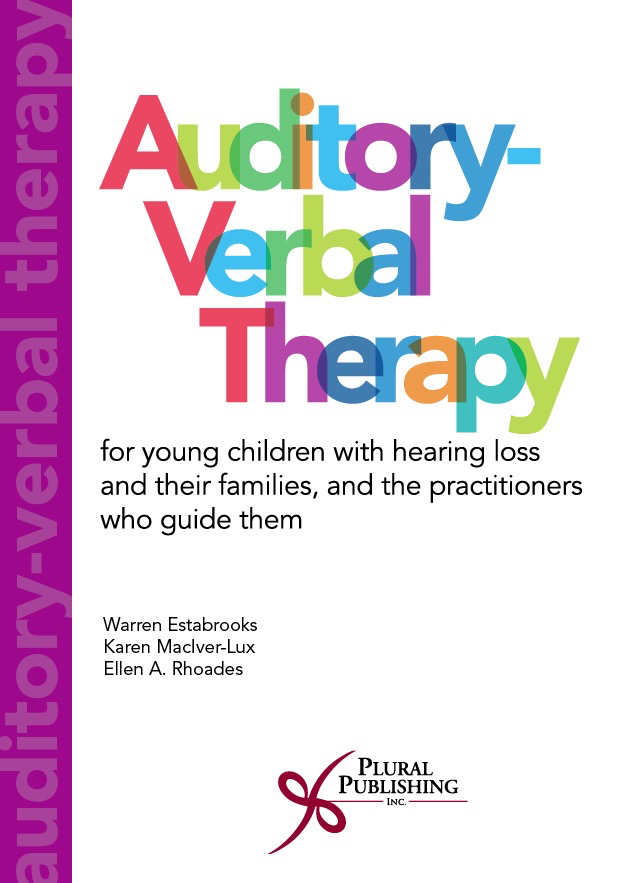
Auditory-Verbal Therapy: For Young Children with Hearing Loss and Their Families, and the Practitioners Who Guide Them
First Edition
Warren Estabrooks, Karen MacIver-Lux, Ellen A. Rhoades
Details: 602 pages, B&W, Hardcover, 7" x 10"
ISBN13: 978-1-59756-888-3
© 2016 | Available
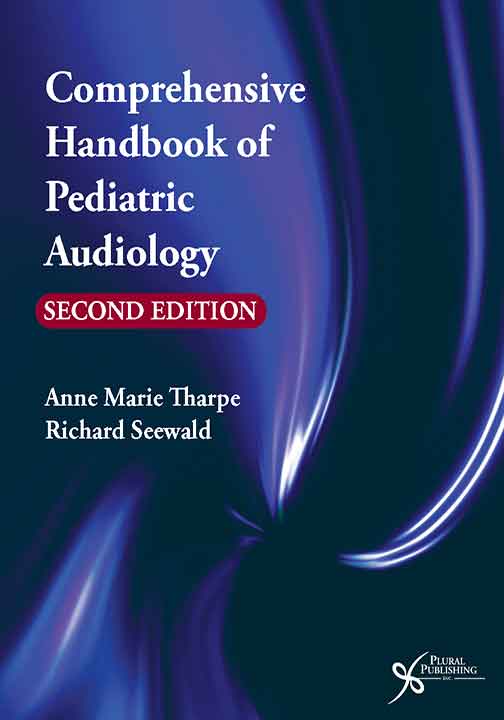
Comprehensive Handbook of Pediatric Audiology
Second Edition
Anne Marie Tharpe, Richard Seewald
Details: 1003 pages, B&W, Hardcover, 8.5" x 11"
ISBN13: 978-1-59756-615-5
© 2017 | Available
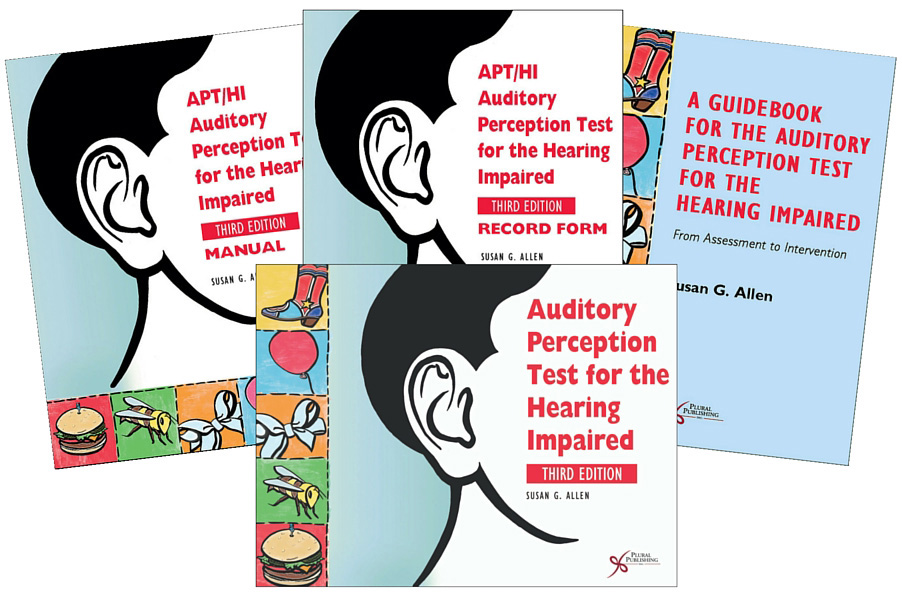
Auditory Perception Test for the Hearing Impaired (APT/HI)
Third Edition
Susan G. Allen
Details: Full Color, Spiral-Bound Test Book, 8.5" x 11", plus Guidebook and Companion website with supplementary materials
ISBN13: 978-1-59756-590-5
© 2016 | Available
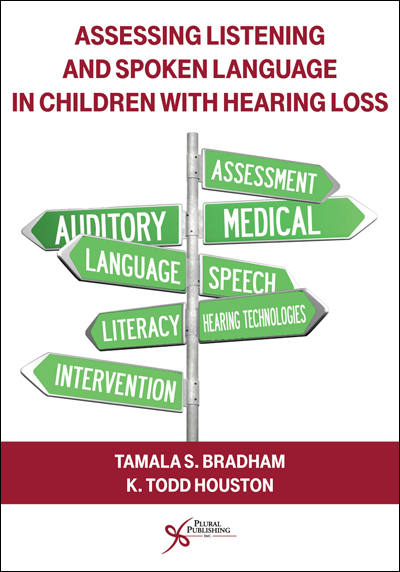
Assessing Listening and Spoken Language in Children with Hearing Loss
First Edition
Tamala S. Bradham, K. Todd Houston
Details: 496 pages, B&W, Softcover, 7" x 10"
ISBN13: 978-1-59756-576-9
© 2015 | Available
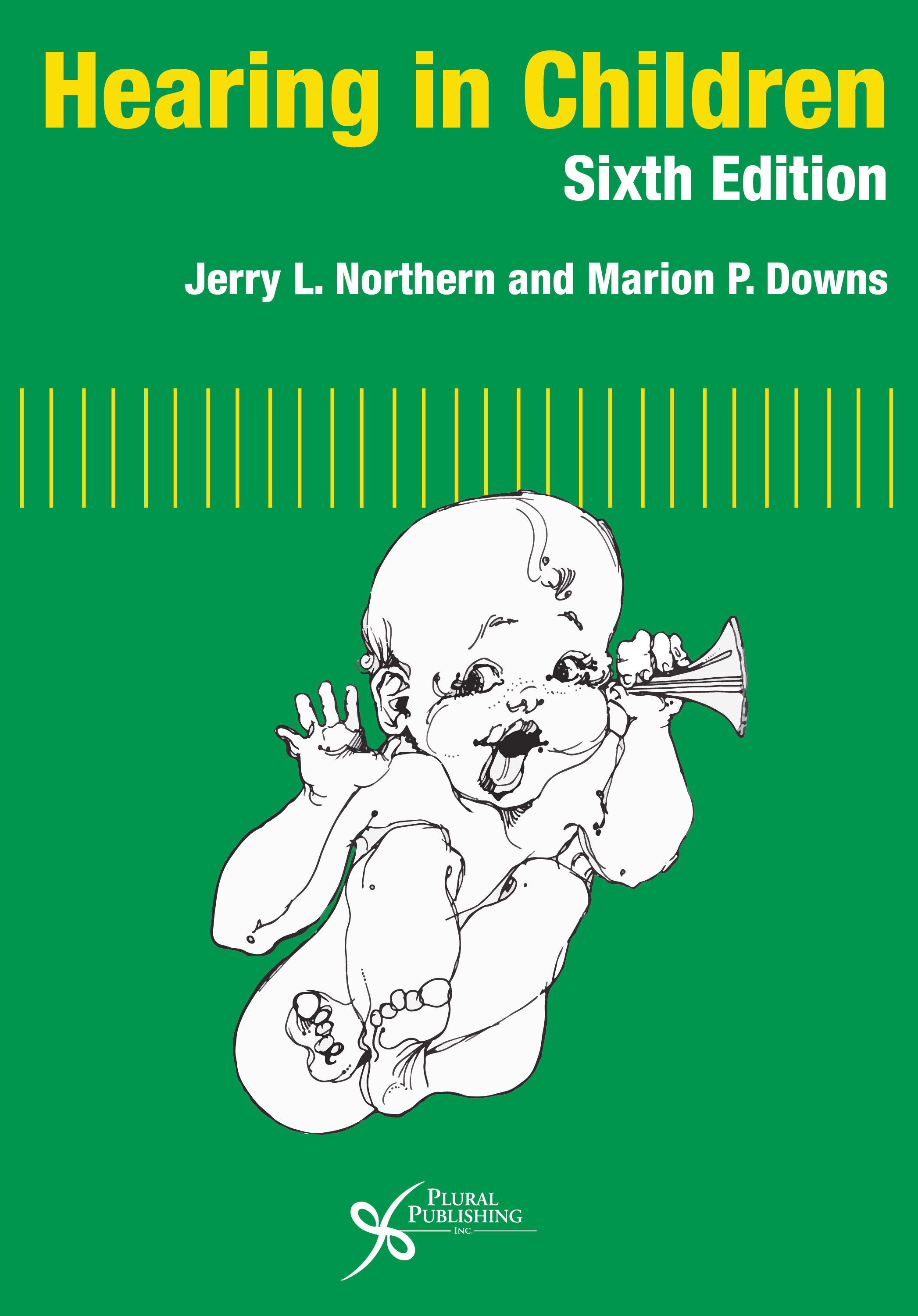
Hearing in Children
Sixth Edition
Jerry L. Northern, Marion P. Downs
Details: 720 pages, B&W, Hardcover, 7" x 10"
ISBN13: 978-1-59756-392-5
© 2014 | Available
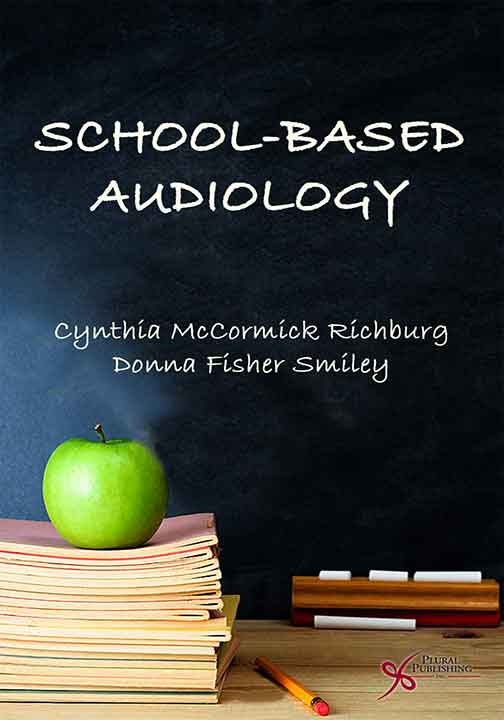
School-Based Audiology
First Edition
Cynthia McCormick Richburg, Donna Fisher Smiley
Details: 288 pages, B&W, Softcover, 7" x 10"
ISBN13: 978-1-59756-385-7
© 2012 | Available
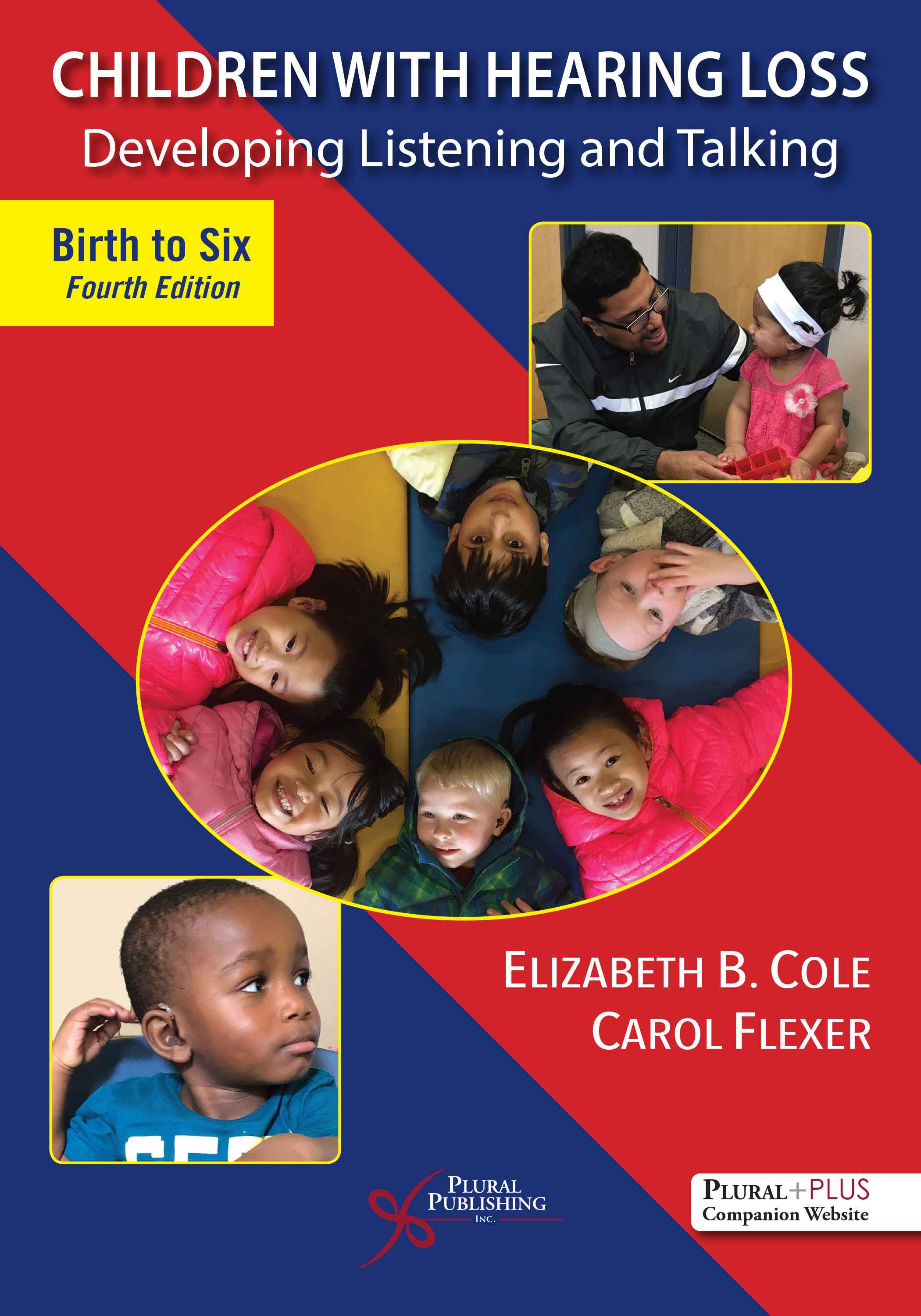
Children with Hearing Loss: Developing Listening and Talking, Birth to Six
Fourth Edition
Elizabeth B. Cole, Carol Flexer
Details: 411 pages, B&W, Softcover, 7" x 10"
ISBN13: 978-1-63550-154-4
© 2020 | Available
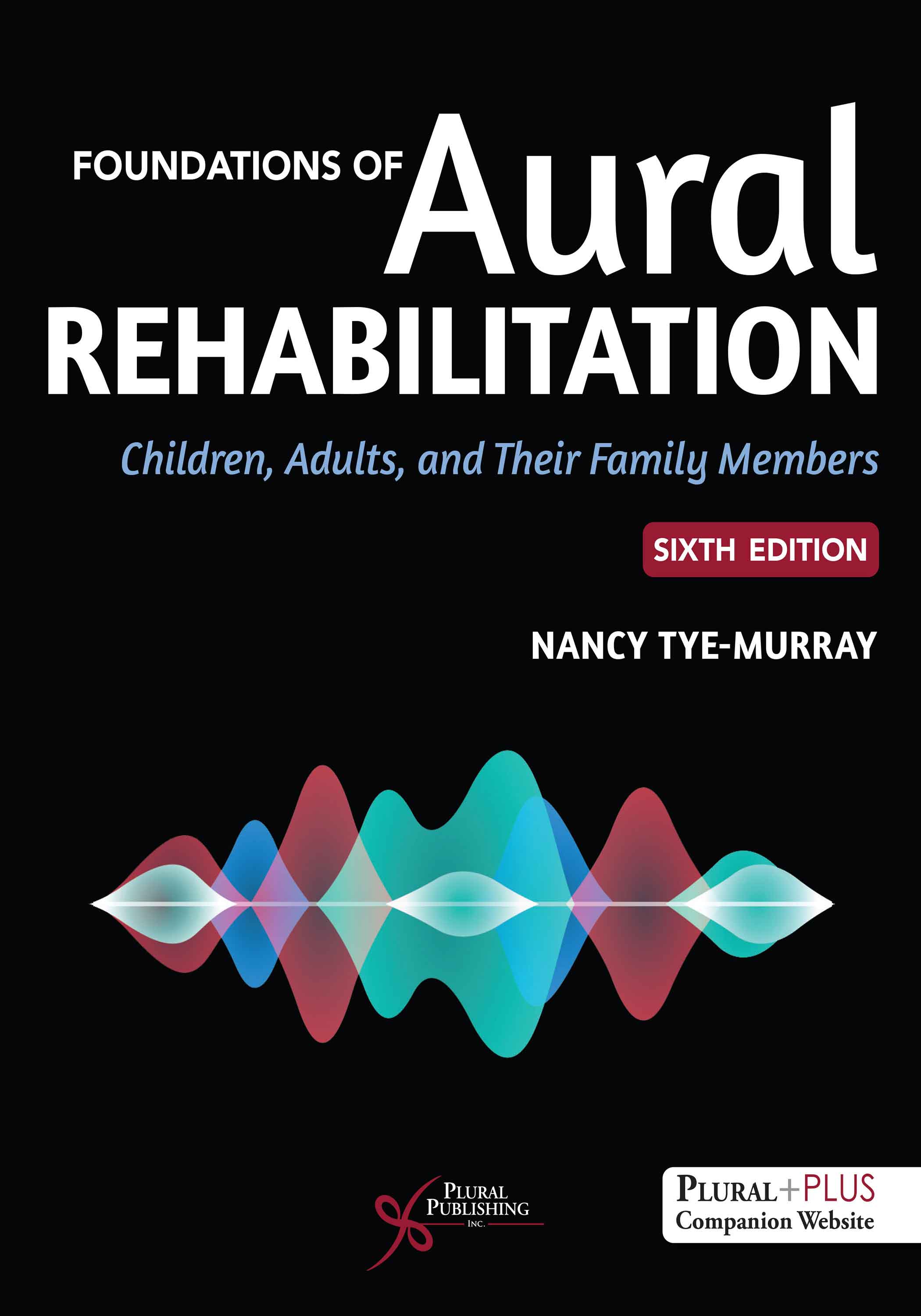
Foundations of Aural Rehabilitation: Children, Adults, and Their Family Members
Sixth Edition
Nancy Tye-Murray
Details: 567 pages, 2-Color, Softcover, 8.5" x 11"
ISBN13: 978-1-63550-420-0
© 2024 | Available


